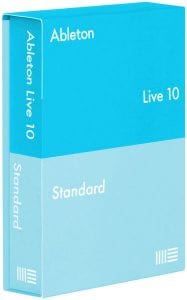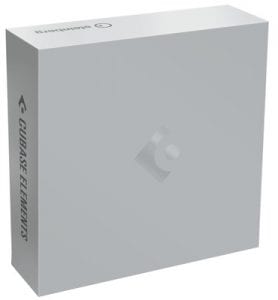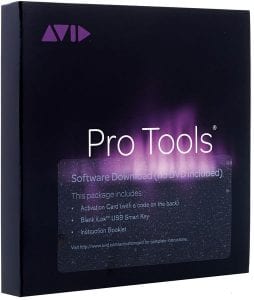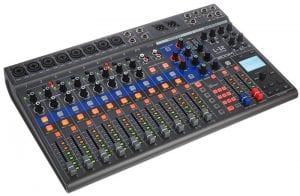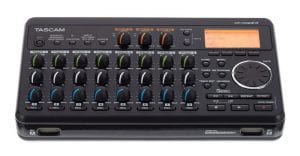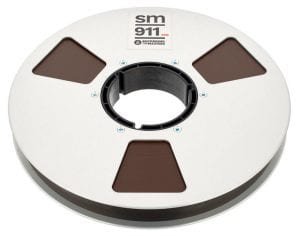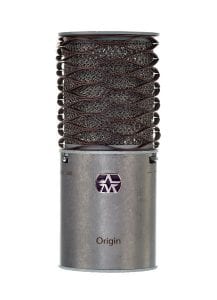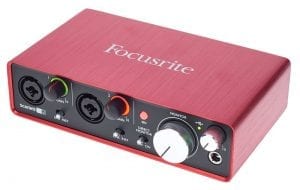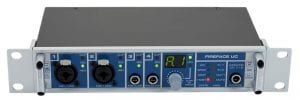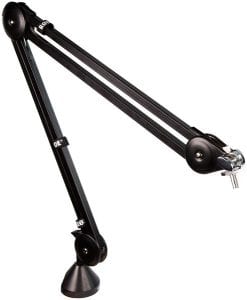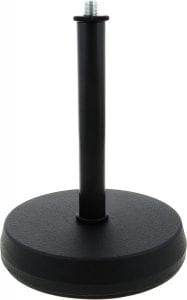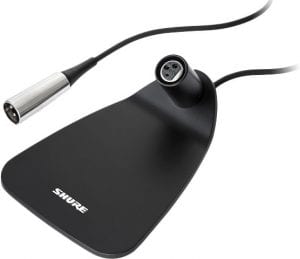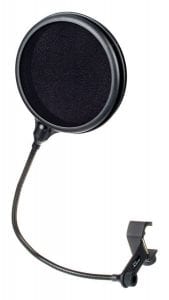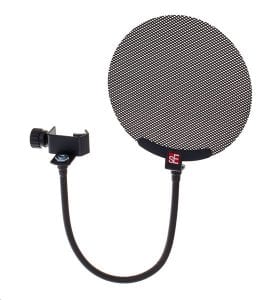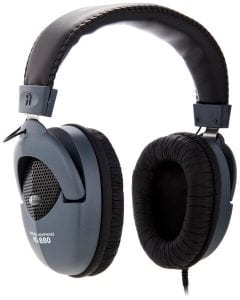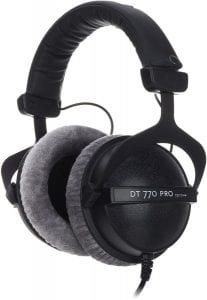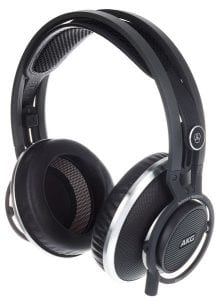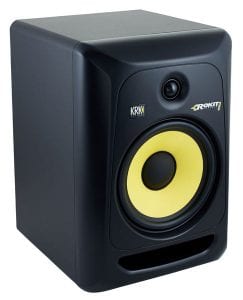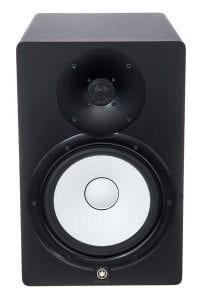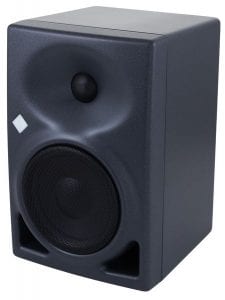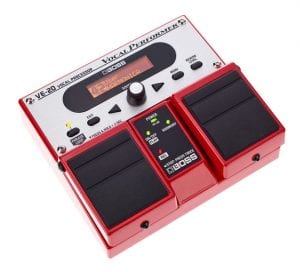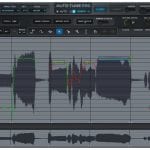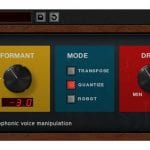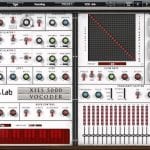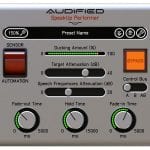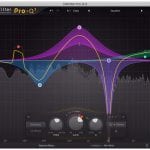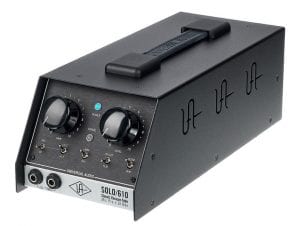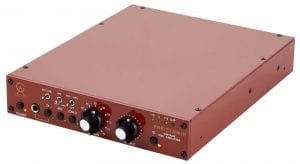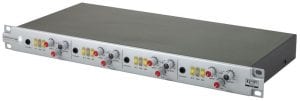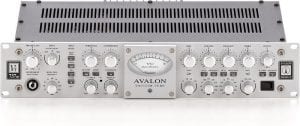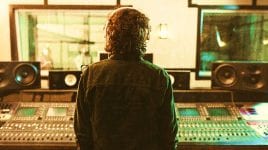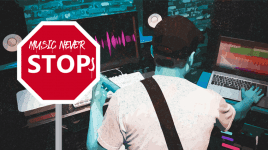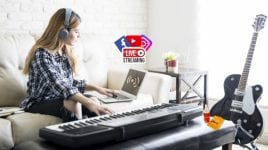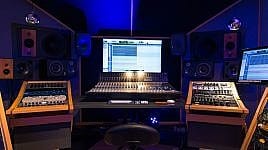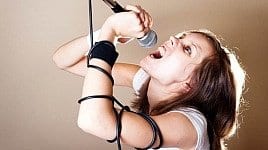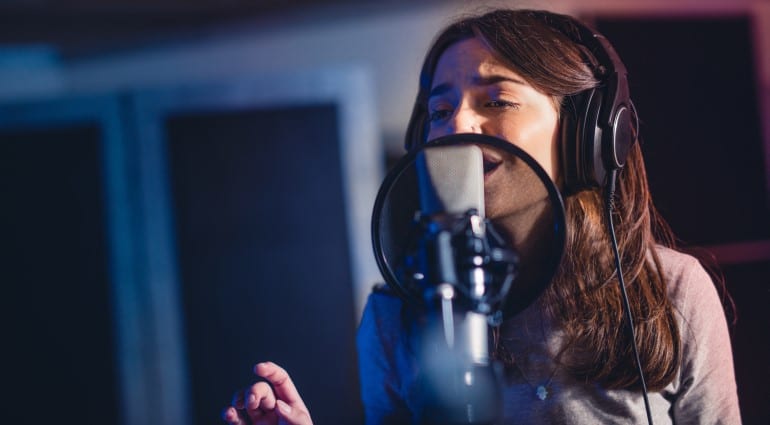
SKIP TO: DAWs | multitrack compact studios | tape | mics | pop filters | input | stands | headphones | mixing monitors | next level
Get it “in the can”!
- Ableton Live 10
- Steinberg Cubase 10
- Avid Pro Tools
Please, NO MORE SCREENS!
- Zoom LiveTrak L-12
- Tascam DP-008 EX
- iZotope Spire Studio
I’m a tape guy / gal!
- Otari Tape-Machine
- Magnetic-Tape
- Standalone-Pre-Amp
- Multichannelmixer
Rock the mic!
- SM58 (dynamic)
- C414 XLS (condenser)
- Aston Origin (condenser)
- M160 (ribbon)
Input
- Focusrite Scarlett 2i2 2nd Gen
- RME Fireface UC
- Steinberg UR22 MK2
Support it
A microphone stand is essential unless you prefer to always sing with the mic in your hand. But be aware: Doing this can cause unwanted noise in your recording, and can be very inconvenient when you need to use both hands for preparing your session. Consider some of these options for the floor, for mounting anywhere or for your desktop:
- Millenium MS 2003
- Rode PSA-1
- K&M 232BK Table Mic Stand
- Shure Centraverse CVD-B
Snap, Crackle, Pop
- the t.bone MS 200
- MS 60 pop killer
- SE Electronics Pop Screen
Output
So far everything we’ve covered allows you to get the vocals recorded, but to play them back you will need either some headphones or some monitor speakers (or both!). Headphones are also very important for monitoring, which means hearing yourself clearly while singing. Every DAW and most devices have a switch to turn monitoring on or off, according to your preference. Some singers prefer just to take the headphones off of one ear and do it that way. Here are a few popular options for headphones in order from very affordable to high-end:
- the t.bone HD 880
- beyerdynamic DT-770 Pro
- AKG K-812
Monitor speakers also range from quite affordable to very very expensive. Since we are discussing home recording, the most practical solution is active nearfield monitors which are designed to be positioned approximately 1 to 2 metres away from the listener. Here are a few of the most popular options:
- KRK RP8 RoKit G3
- Yamaha HS 8
- Neumann KH 120 A
These are the absolute essentials. Now, if you want to take your vocal recordings to the next level you might want to consider some of these products:
TC-Helicon Ditto Mic Looper
It’s hard to get people together for practising… especially singers. Often in the beginning, singers are shy or uncomfortable experimenting in the presence of others. That’s where this TC-Helicon Ditto Mic Looper comes in handy, allowing you to loop your own voice, add layers or practise new harmonies or backing vocals over your lead vocals. Solitary fun and great practice for your recording session!
- TC-Helicon Ditto Mic Looper
- XLR in / out
Effects (pre-production)
Just like guitarists, vocalists also have effect pedals, and they love them equally as much. These can be used for live, onstage, singing or for recording, especially if you won’t be using a computer / DAW. Simply connect some of these effects in the signal chain before your recording device to add flavour or presence to your vocals using delay, reverb, doubling, harmonising, compression, pitch shifting, etc. Check out these great vocal effect pedals, and many others, in our shop:
- TC-Helicon VoiceTone H1
- TC-Helicon Talkbox Synth
- Boss VE-20 Vocal Performer
- TC-Helicon Perform-VK
Effects (post-production)
There is a plethora of effects that you can put on your vocal recording after recording in your DAW: Reverb, delay, saturation, doubling, EQ, compression, pitch modulation, pitch correction, vocoder and many more. Check out some of the software plugins that are most popular in our shop:
- iZotope Nectar 3
- Antares Auto-Tune Pro
- Soundtoys Little AlterBoy
- Xils Lab XILS Vocoder 5000
- Audified SpeakUp
- FabFilter Pro-Q 3
Professional mic pre-amps
If you want to step it up a few notches, and have the budget to do so, consider getting a professional mic pre, for a rich, ultra-clean sound with higher gain capabilities. Some popular, and legendary, options are:
- Universal Audio Solo 610
- Golden Age Project Pre-73 MKIII
- SSL X Logic Alpha VHD Pre
- Avalon VT-737SP
the t.akustik vocal booth
You are currently viewing a placeholder content from Facebook. To access the actual content, click the button below. Please note that doing so will share data with third-party providers.
More InformationYou are currently viewing a placeholder content from Instagram. To access the actual content, click the button below. Please note that doing so will share data with third-party providers.
More InformationYou are currently viewing a placeholder content from X. To access the actual content, click the button below. Please note that doing so will share data with third-party providers.
More Information